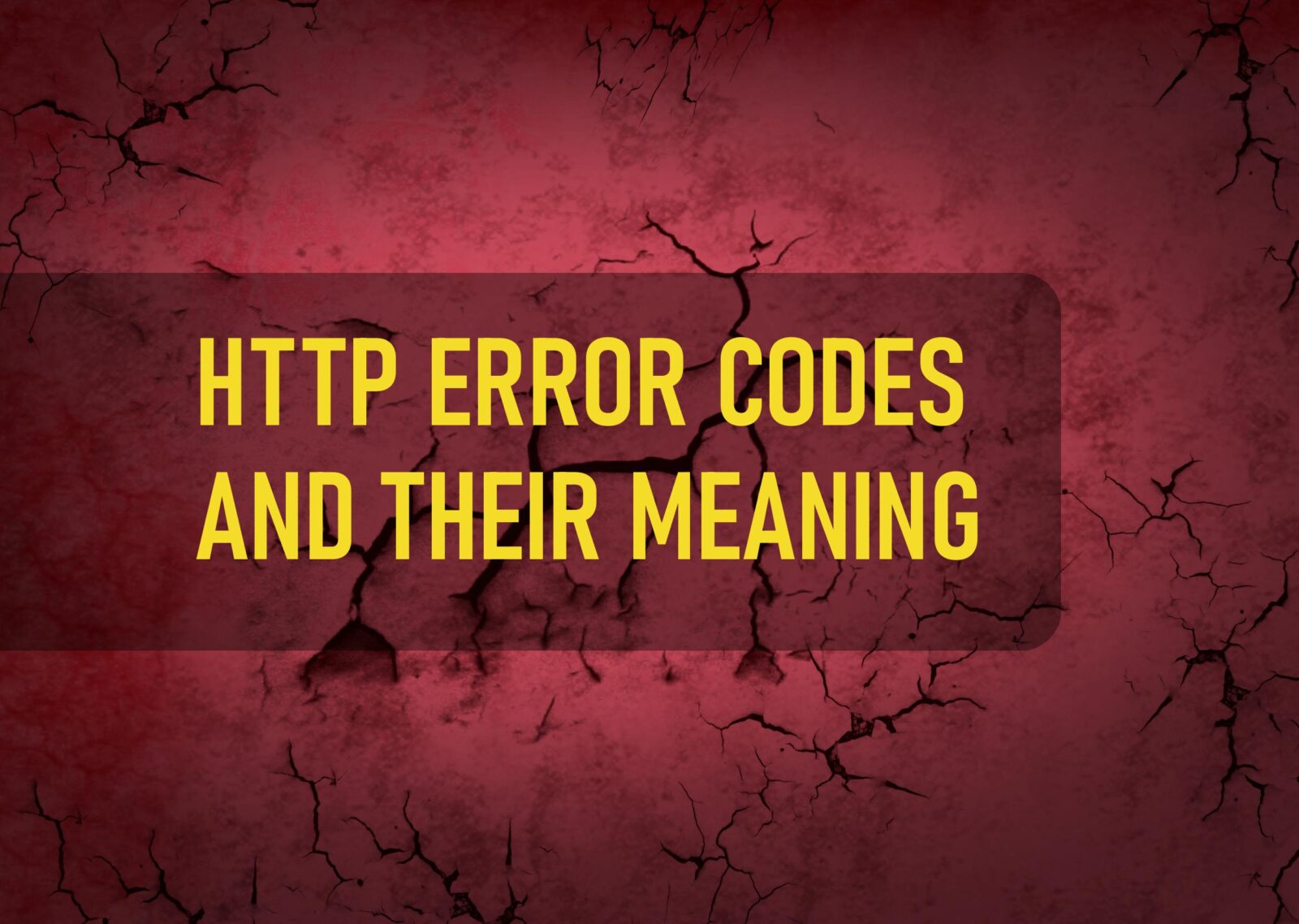When browsing the web, you might occasionally encounter HTTP errors—those frustrating codes that stop you from accessing a website. These errors are status codes returned by a web server to indicate that something has gone wrong in the process of handling a request. Understanding the meaning behind these HTTP errors can help you troubleshoot issues with websites, whether you’re a user or a developer.
In this article, we’ll break down the most common HTTP errors, their meanings, and how to fix or address them.
What Are HTTP Status Codes?
HTTP status codes are standardized responses from a web server that communicate the result of a request made by a browser. These codes are grouped into five categories:
- 1xx: Informational responses.
- 2xx: Success responses.
- 3xx: Redirection responses.
- 4xx: Client errors.
- 5xx: Server errors.
Each status code represents a specific meaning, and certain codes indicate errors that either the client (you) or the server needs to fix.
Common HTTP Errors and Their Meanings
1. 400 Bad Request
The 400 Bad Request error occurs when the server cannot process the request because it is malformed or invalid. This usually happens due to incorrect syntax, corrupted requests, or invalid inputs.
Causes:
- Incorrect URL formatting.
- Corrupted browser cookies or cache.
- Invalid request parameters.
How to Fix:
- Check the URL for errors.
- Clear your browser’s cookies and cache.
- Ensure that your inputs (e.g., form data) are valid.
2. 401 Unauthorized
The 401 Unauthorized error indicates that the request lacks valid authentication credentials. It usually occurs when you’re trying to access a restricted resource without logging in or using the wrong login credentials.
Causes:
- Incorrect or missing authentication details (username/password).
- Expired session or token.
How to Fix:
- Verify your login credentials.
- Log in and ensure proper authentication.
- Check for session timeouts and log in again if necessary.
3. 403 Forbidden
The 403 Forbidden error means that the server understands the request but refuses to authorize it. Even if you’re logged in, you might not have permission to access the requested resource.
Causes:
- Insufficient user permissions.
- File or directory permissions set incorrectly on the server.
- IP address blacklisting.
How to Fix:
- Ensure you have the correct access rights to the resource.
- Contact the website administrator if you believe the restriction is a mistake.
- Check for IP blocking or firewall rules if you’re the server admin.
4. 404 Not Found
The 404 Not Found error is one of the most common HTTP errors. It indicates that the server cannot find the requested resource, usually because the URL is incorrect or the page no longer exists.
Causes:
- The page has been removed or moved to a different URL.
- Typo or incorrect URL entry.
- Broken links on the website.
How to Fix:
- Double-check the URL for any mistakes.
- Use the website’s search feature to find the page.
- If you’re the website owner, ensure the link is updated or redirect users to the correct page.
5. 405 Method Not Allowed
The 405 Method Not Allowed error occurs when the request method (e.g., GET, POST, PUT, DELETE) is not supported by the server for the requested resource.
Causes:
- Attempting to use a method (such as POST) that the server doesn’t support for the specific URL.
- Misconfigured server or API.
How to Fix:
- Verify that you’re using the correct HTTP method for the resource.
- Check the API or server configuration to ensure proper method handling.
6. 408 Request Timeout
The 408 Request Timeout error occurs when the server takes too long to process the request, usually due to network issues or slow connectivity.
Causes:
- Slow or unstable internet connection.
- The server is overloaded or taking too long to respond.
How to Fix:
- Check your internet connection and try again.
- Refresh the page or try the request later.
- If you’re the website admin, consider optimizing server response times or increasing the timeout limit.
7. 429 Too Many Requests
The 429 Too Many Requests error indicates that the client has made too many requests in a short period of time. Servers often impose rate limits to prevent abuse or overloading.
Causes:
- Exceeding the server’s rate limit or quota.
- Bots or scripts making frequent requests.
How to Fix:
- Wait for a while and try again later.
- If you’re the website owner, adjust rate limits or implement proper throttling mechanisms.
- Ensure that your requests are within the server’s allowed rate.
8. 500 Internal Server Error
The 500 Internal Server Error is a general server-side error. It means that something has gone wrong on the server, but the exact cause is unclear.
Causes:
- Server misconfiguration.
- Software or script errors.
- Overloaded or mismanaged server resources.
How to Fix:
- Refresh the page and try again later.
- If you’re the server admin, check server logs for detailed error messages.
- Debug the server-side scripts or applications for issues.
9. 502 Bad Gateway
The 502 Bad Gateway error occurs when a server (acting as a gateway or proxy) receives an invalid response from an upstream server. This is typically seen in multi-server setups where one server is communicating with another.
Causes:
- Server communication failure.
- Overloaded servers or incorrect server configuration.
How to Fix:
- Refresh the page and try again later.
- If you’re the server admin, ensure the upstream server is running properly and that communication between servers is configured correctly.
10. 503 Service Unavailable
The 503 Service Unavailable error means that the server is temporarily unable to handle the request. This is often caused by the server being overloaded or down for maintenance.
Causes:
- Server overload due to high traffic.
- Scheduled maintenance or downtime.
- Resource constraints like insufficient memory or CPU.
How to Fix:
- Try again later, as the server may be under maintenance.
- If you’re the website owner, scale up server resources to handle more traffic or optimize the server’s performance.
11. 504 Gateway Timeout
The 504 Gateway Timeout error occurs when a server (acting as a gateway or proxy) fails to receive a timely response from an upstream server. It’s similar to the 502 error but is specifically related to the server timing out.
Causes:
- Network issues between servers.
- The upstream server is slow or unresponsive.
How to Fix:
- Refresh the page or try again later.
- As a server admin, ensure proper connectivity between servers and optimize upstream server performance.
Conclusion
HTTP errors are common and can be frustrating, but they serve as important indicators of what’s going wrong between the client and the server. Understanding what each error code means can help users and developers troubleshoot issues more efficiently. While some errors are caused by client-side mistakes (such as incorrect URLs), others stem from server-side problems that require intervention from website administrators.
By recognizing the most common HTTP errors and their meanings, you can identify and fix web issues faster, ensuring a smoother browsing experience for users.






Leave a Reply